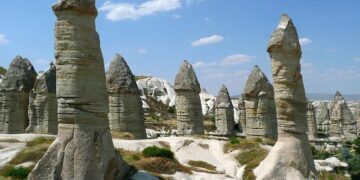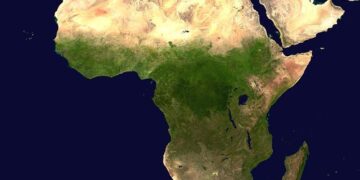In a startling discovery that reads like a prehistoric tragedy, scientists have uncovered evidence that a group of baby pterosaurs perished suddenly during a violent storm some 150 million years ago. Unearthed in exceptionally preserved fossils, these fragile winged reptiles’ final moments offer a rare glimpse into the dangers faced by ancient creatures during the Jurassic period. The findings, detailed by Live Science, shed new light on the impact of extreme weather events on prehistoric ecosystems and the vulnerability of young pterosaurs to nature’s fury.
Scientists Uncover Evidence of Baby Pterosaurs Perishing in Jurassic Storm
Fossil evidence unearthed in a Jurassic quarry has revealed a tragic event frozen in time: the sudden death of baby pterosaurs during a violent storm roughly 150 million years ago. Paleontologists studying the delicate remains discovered that the tiny wings, fragile bones, and even the softer tissues of these juvenile flying reptiles were exceptionally well-preserved, suggesting rapid burial after being caught in a severe weather event. The storm likely unleashed powerful winds and torrential rains, leading to the mass demise of these young pterosaurs, which were unable to escape the fury of the elements.
Key findings from the fossil site include:
- Extensive grouping of hatchling and juvenile pterosaur skeletons
- Signs of sediment displacement consistent with storm surge flooding
- Evidence of broken bones and physical trauma indicating a violent environmental event
| Attribute | Details |
|---|---|
| Species | Rhamphorhynchus sp. |
| Estimated Age | 150 million years (Late Jurassic) |
| Specimens Found | Over 20 juveniles |
| Preservation Type | Complete skeletons with soft tissue impressions |
Reconstructing the Violent Weather Event That Shaped Ancient Ecosystems
Scientists have pieced together evidence of a catastrophic meteorological event that struck during the late Jurassic period, resulting in the sudden demise of a clutch of baby pterosaurs. Fossilized remains found in what is now Germany display telltale signs of intense flooding and violent winds, suggesting a storm of unprecedented scale. The devastating environmental upheaval not only wiped out these delicate creatures but also left a lasting impact on the surrounding flora and fauna, altering ecological dynamics for centuries.
Detailed analysis using sedimentology and paleoclimatic data reveals that this tempest brought a combination of torrential rain, flash floods, and strong gusts exceeding 100 km/h. The immediate aftermath created inhospitable conditions that reshaped ancient habitats. Key factors identified include:
- Rapid sediment deposition that entombed fragile skeletal remains
- High-energy water currents dispersing vegetation and smaller fauna
- Temperature fluctuations disrupting local biological cycles
| Storm Attribute | Estimated Intensity | Impact on Ecosystem |
|---|---|---|
| Wind Speed | 100+ km/h | Displaced nests and juvenile animals |
| Rainfall | 200 mm/day | Caused rapid flooding and sediment layers |
| Temperature Drop | 5°C within hours | Stressed flora and fauna, disrupted food chains |
Implications for Understanding Prehistoric Climate and Creature Survival Strategies
Discoveries of the tragic fate of these juvenile pterosaurs offer a window into the intense and sudden climatic events that periodically shaped Jurassic ecosystems. The evidence of a catastrophic storm suggests that prehistoric weather was not only volatile but also deadly, directly impacting survival rates of vulnerable species. This finding challenges previous assumptions that Mesozoic climates were predominantly stable, instead revealing that rapid environmental upheavals could have played a critical role in evolutionary pressures and population dynamics during the era.
Furthermore, the fossil assemblage provides fresh insights into the survival strategies of prehistoric creatures. The presence of nestlings caught in flight indicates potentially advanced parental care or early learning behaviors critical for evading environmental hazards. Researchers propose that such harsh weather events may have driven adaptive traits like flocking, nesting in protected locations, or rapid maturation to enhance survival odds. These observations highlight the complex interplay between climate variability and behavioral evolution in prehistoric times, deepening our understanding of how ancient life endured amidst nature’s extremes.
- Climate volatility: Sudden storms shaping habitat viability
- Survival traits: Behavioral adaptations in the face of environmental threats
- Evolutionary impact: Selective pressures accelerating species resilience
| Factor | Impact on Prehistoric Species |
|---|---|
| Storm Intensity | High mortality rate among juveniles |
| Behavioral Adaptations | Development of protective nesting habits |
| Climate Fluctuations | Accelerated evolutionary responses |
In Conclusion
The discovery of the baby pterosaurs that perished in a catastrophic storm 150 million years ago offers a rare and poignant glimpse into the challenges faced by ancient life. As scientists continue to piece together the events leading to this mass death, the findings not only deepen our understanding of Jurassic ecosystems but also underscore the powerful forces of nature that have shaped life on Earth. This study serves as a vivid reminder that even the most extraordinary creatures were vulnerable to the planet’s volatile past.































